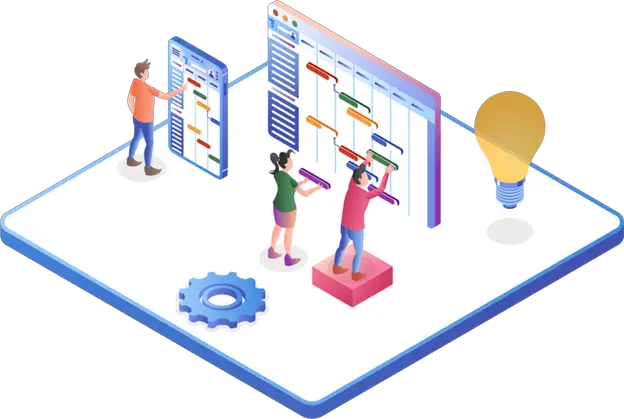In today’s fast-paced world, automation has become a significant tool for organizations looking to streamline operations, enhance efficiency, and stay ahead of rivals. As we go into 2023, several emerging automation trends promise to shape how businesses operate and revolutionize industries.
From implementing technologies like artificial learning and machine learning to investing in smart tech solutions like Dynamics 365 Finance and Operations, there are many intelligent upcoming trends to watch out for.
This blog will explore some of these trends and how they can propel businesses towards efficiency.
Hyper-Automation: Expanding Boundaries
Hyper-automation, a term coined by Gartner, refers to combining multiple automation technologies, including AI, ML, RPA, and intelligent business process management suites (iBPMS). This trend will grow exponentially in 2023 as organizations aim to automate complex business processes and achieve end-to-end automation.
As a result, businesses can optimize operations, enhance decision-making processes, and improve customer experiences by leveraging hyper-automation.
AI and ML Advancements
Artificial intelligence and machine learning are upholstering automation to new heights. In 2023, we can expect important advancements in AI and ML capabilities, such as natural language processing (NLP), computer vision, and predictive analytics.
These technologies enable businesses to automate mundane tasks, gain valuable insights from data, and provide personalized experiences to customers. From chatbots and virtual assistants to intelligent data analysis, AI and ML transform organizations’ operations.
Intelligent Robotic Process Automation (RPA)
Robotic Process Automation (RPA) has been gaining traction recently and gained momentum in 2023. RPA involves using software robots or “bots” to automate rule-based, repetitive tasks, allowing employees to focus on more strategic and value-added activities.
With advancements in AI, RPA is becoming more intelligent, capable of handling unstructured data, and seamlessly collaborating with humans. As a result, organizations across various industries are adopting RPA to increase efficiency and reduce costs.
Cloud-Based Automation Solutions
Cloud computing has transformed how businesses function, and automation is no exception. Cloud-based automation solutions offer scalability, flexibility, and easy integration with existing systems. As a result, in 2023, we look forward to seeing more businesses migrating their automation processes to the cloud.
Cloud-based automation reduces infrastructure costs and enables real-time data access, collaboration, and remote work capabilities, making it a good option for organizations of all sizes.
Process Mining and Optimization
Process mining is a data-driven approach to analyzing and visualizing business processes and identifying inefficiencies and bottlenecks. Organizations can gain insights into their operations by leveraging process mining tools and techniques, making data-backed decisions, and optimizing workflows.
In 2023, we will witness an increased focus on process mining and optimization as businesses strive for operational excellence and continuous improvement.
Intelligent Document Processing (IDP)
In today’s digital age, organizations handle vast amounts of documents and data daily. Intelligent Document Processing (IDP) combines OCR (Optical Character Recognition) with AI and ML algorithms to automate data extraction, classification, and validation from unstructured documents.
In 2023, IDP will be crucial in automating document-centric processes like invoice processing, contract management, and compliance. In addition, IDP eliminates manual data entry, reduces errors, and accelerates document processing times, improving operational efficiency.
Human-Automation Collaboration
Contrary to popular belief, automation is not here to replace humans but to augment their capabilities and enable them to focus on more strategic and creative tasks.
In 2023, we will witness but augment their capabilities and enable them to focus on more strategic and creative tasks. In addition, in 2023, we will notice an emphasis on human-automation collaboration. Organizations will recognize the importance of combining the strengths of both humans and machines to achieve optimal results.
Automation will handle repetitive and mundane tasks, freeing human employees to engage in critical thinking, problem-solving, and relationship-building activities. This collaboration will enhance productivity, innovation, and job satisfaction among employees.
Cybersecurity Automation
Cybersecurity has become a top business priority due to the rising number of cyber threats and data breaches. In 2023, automation will play a crucial role in strengthening cybersecurity measures. AI-powered security solutions will continuously monitor networks, detect anomalies, and respond to threats in real time.
Automation will enable faster incident response, threat hunting, and vulnerability management, minimizing the risk of data breaches and ensuring the integrity of business operations.
Intelligent Supply Chain Management
Supply chain management is a complex and dynamic process that involves multiple stakeholders, inventory management, logistics, and demand forecasting. In 2023, automation will transform supply chain management by integrating AI, ML, and IoT (Internet of Things) technologies.
Intelligent systems will enable real-time tracking, predictive analytics, demand sensing, and automated inventory management, improving efficiency, reducing costs, and enhancing customer satisfaction.
Conclusion
As we step into 2023, the world of automation is evolving rapidly, bringing forth many opportunities and challenges for businesses. These trends are reshaping industries and driving digital transformation, from hyper-automation and AI advancements to RPA, cloud-based solutions, and intelligent process optimization.
Organizations that embrace these automation trends will gain a competitive edge by improving operational efficiency, customer experiences, and decision-making processes.


























